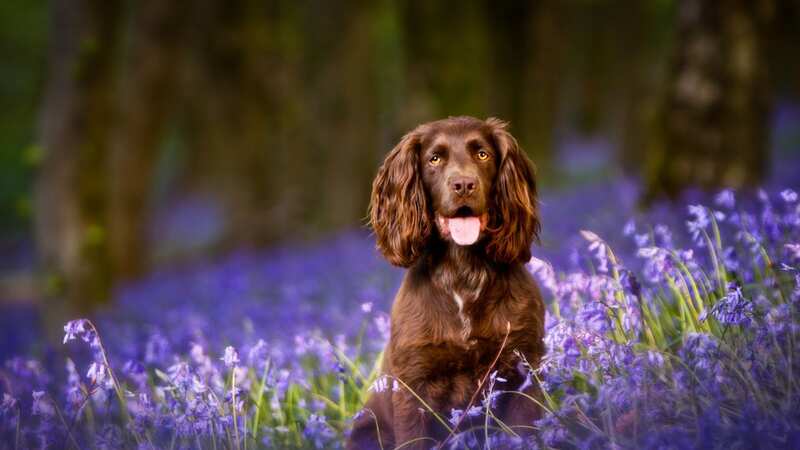Expert warns of 'distinctive' and beautiful flower that is poisonous to dogs

Nature walks are the perfect way to enjoy the great outdoors with your dog. However, pet owners are being urged to stay vigilant and keep clear of plants that are toxic to their four-legged friends.
Some common plants can cause severe health issues when ingested by dogs. Typical signs of poisoning include drooling, pale gums, lethargy, vomiting, diarrhoea, rash and seizures. Small dogs and puppies are at greater risk of getting poisoned because even if they ingest a little amount of a toxic plant, it can lead to significant harm.
So which plants should we be wary of? Bluebells are considered poisonous to dogs because they contain toxic compounds known as glycosides. These toxins can be found throughout the plant, including the leaves, stems, flowers, and bulbs. Bluebells have a distinctive appearance, with violet bulbs and a narrow bell shape.
Dog owners should also keep an eye out for autumn crocuses. They are highly toxic to dogs due to the presence of colchicine which is extremely potent and can have severe and potentially lethal effects on dogs. Colchicine poisoning can occur when your dog ingests any part of the autumn crocus plant. Autumn crocuses have large, fragrant bulbs that are usually light pink or purple.
Azaleas are also on the watch list. They contain grayanotoxins which can disturb the function of dogs' nerve and muscle cells. The main symptoms of Azalea poisoning are abnormal heart rhythms, tremors and low blood pressure. Azalea shrubs have colourful funnel-shaped flowers.
 Girl, 4, mauled to death in dog attack pictured as neighbours hear mum's screams
Girl, 4, mauled to death in dog attack pictured as neighbours hear mum's screams
Ivy can be poisonous to dogs if ingested and can also cause a rash if it comes in contact with skin. This is because it contains toxic chemicals called saponins as well as polyacetylene compounds. Although the symptoms are usually not life-threatening they can still cause serious health issues such as an upset stomach and skin and mouth irritation. Ivy has glossy, heart or arrow-shaped leaves.
 Giant hogweed is very dangerous for dogs (Credit: Scottish Invasive Species Initiative via Pen News)
Giant hogweed is very dangerous for dogs (Credit: Scottish Invasive Species Initiative via Pen News)Despite its beautiful appearance with colourful trumpet-shape blooms, you should never let your dog go near a foxglove plant. Foxglove is highly toxic to dogs, causing nausea, seizures, tremors, and can even lead to death. Fortunately foxgloves are very tall, growing up to 5 feet, so they're easy for dog owners to notice.
Cotoneaster is a common evergreen shrub with bright red berries. Although cotoneaster is considered to be slightly poisonous to dogs, if they ingest a large quantity of cotoneaster berries or leaves then it can cause gastrointestinal issues such as severe stomach pain and diarrhoea.
The most significant danger from giant hogweed comes from skin contact with the plant's sap and subsequent exposure to sunlight, causing severe burns and blisters. If the sap gets into your dog's eyes it can even cause blindness. Giant hogweed has an umbrella-shaped head with white flowers and can grow up to almost 15 feet tall.
So what should you do if you suspect your dog has ingested a poisonous plant? Firstly, it is essential to contact a veterinarian or animal poisoning hotline immediately to aid their recovery. Pet insurance comparison expert at Quotezone.co.uk , Helen Rolph said: “When out on walkies, whether it's in a park, in the countryside or forest, it's important to be vigilant and make sure that your dog doesn't ingest anything toxic.
"Our four-legged friends are naturally curious, so it's our responsibility to keep them safe from the potential dangers during outdoor adventures. Every dog owner should read up on the range of toxic plants for dogs that can be commonly encountered in their area, some are quite surprising. Although you may want to let your dog roam free, choose your off lead spot wisely and if you’re unsure of any surrounding plants, best keep them on the lead."
Read more similar news:
Comments:
comments powered by Disqus
































